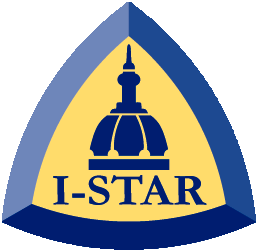
The I-STAR Labs
Imaging for Surgery, Therapy, and Radiology
- A-C
- D-K
- L-P
- Q-S
- T-V
- W-Z
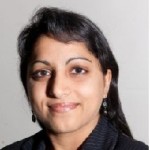
Sugandha Arora
Sugandha worked as a Masters student in Computer Science at Johns Hopkins University, where her research involved the development of 3D image analysis techniques for detection of subtle changes in bone / joint morphology. Sugandha is now a Senior Software Engineer and Administrator for the Salesforce Center of Excellence (CoE) at DaVita Kidney Care.

Micah Belzberg
Micah Belzberg was a visiting medical student from Sackler School of Medicine at the University of Tel Aviv. His primary project involves the development of a statistical atlas of the cerebral ventricles for use in surgical device development. Between undergraduate and medical school, Micah worked at a Los Angeles based architecture firm where he participated in the design and construction of several award winning buildings.
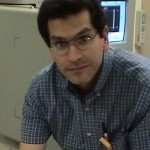
Babak Bhaktiar
Babak worked with Jeff Siewerdsen at the University of Toronto, where his research included the investigation of x-ray scatter in cone-beam CT and reduction of scatter artifacts using grids and correction algorithms.
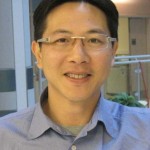
Harley Chan
Dr. Chan worked with Dr. Siewerdsen at the University of Toronto on topics in image-guided surgery, including the first clinical translation of C-arm cone-beam in skull base / head and neck surgery as well as the development of new 3D printing methods for surgical simulation. Harley is now a Research Associate at TECHNA Institute / University Health Network, Toronto ON.

Sweeny Chhabra
Sweeny earned a Master of Engineering degree at the University of Toronto, where her research focused on image quality in tomosynthesis. Her research includes early work in modeling anatomical clutter and its effect on task-based detectability. She also worked on modeling of patient wait-times for emergency surgery. She earned her MBA in Finance from INSEAD (the #1 ranked global MBA program) and is now employed at M&T Bank in Financial Planning and Analysis, Baltimore MD.
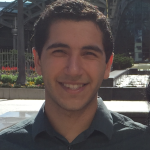
Victor Dadfar
Victor Dadfar was an undergraduate Biomedical Engineer with minor in Computer Science, Victor is passion was Computer Vision/Computer Graphics and programming. He worked on projects involve creating an application for automatic Cobb Angle computations given CT scans/Fast Spine data and researching cutting edge algorithms in vertical (stand-up) imaging systems.
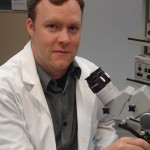
Michael Daly
Mike Daly worked with Dr. Siewerdsen at the University of Toronto, where his research involved early development of C-arm cone-beam CT. His work uncovered important principles of geometric calibration and C-arm CBCT image quality. Mike continued his PhD studies at the University of Toronto and currently works at the University Health Network, Toronto ON.
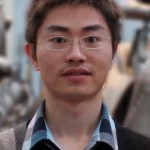
Hao Dang, Ph.D.
Hao Dang was a PhD student in the Department of Biomedical Engineering at Johns Hopkins University and a research assistant in the I-STAR Lab. His research included development of advanced 3D image reconstruction methods for image-guided interventions. His past research includes automatic image-world registration in surgical navigation, integrating C-Arm cone-beam CT with real-time tracking in seamless workflow. Other work includes intraoperative registration update methods for robotic skull drilling and novel similarity metrics and saliency-based hierarchy models for accurate 3D-3D image registration.
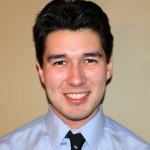
Paul DeJean
Paul DeJean worked in the I-STAR Lab as a Research Scientist, where his research involved the development and first clinical studies of dedicated cone-beam CT of the extremities as well as early work on mobile dual-energy radiography. He is now CEO of Luca Medical Systems (Palo Alto CA), which develops autonomous medical physics quality assurance hardware and software.

Amar Dhanantwari, Ph.D
Dr. Dhanantwari worked with Dr. Siewerdsen as a Research Scientist at the University of Toronto. His work included the development of a new cardiac-gated dual-energy imaging system to improve the detection and discrimination of early-stage lung cancer. He is now a lead scientist in CT imaging at Philips Healthcare, Cleveland OH.
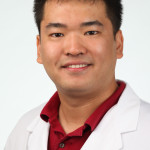
Yifu Ding
Yifu worked as a Research Assistant in Biomedical Engineering Department at Hopkins, where his research at I-STAR included 3D image analysis and image reconstruction. He is currently enrolled in the MD/PhD Program at the Penn State College of Medicine.
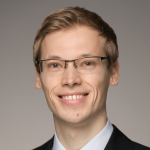
Joseph Goerres
Joseph Goerres was a postdoctoral research fellow in the Department of Biomedical Engineering at Johns Hopkins. He worked on the development of novel intraoperative approaches in order to facilitate image-guided orthopedic interventions and improve their accuracy. His research interests included image segmentation, shape modeling, object detection, and investigating the applicability of these methods for intraoperative C-arm imaging. His background covers 3D shape model segmentation and feature detection in the context of orthopedic treatments at the lower ankle joint.

Nathaniel Hamming
Nathanial earned his Master’s Degree at the University of Toronto, where his research with Dr. Siewerdsen involved mathematical models and optimization of registration accuracy in image-guided surgery. His work won a Best Thesis award at U of T and led to the development of automatic registration methods for image-guided head and neck surgery. Nathaniel is now a Biomedical Engineer at HMT Inc., working with the University Health Network, Toronto ON.
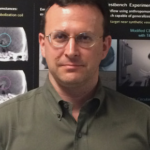
Matthew Jacobson
Dr. Jacobson was a Research Associate at I-STAR working on novel 3D image reconstruction algorithms. A focus of his work included 3D imaging from non-circular C-arm orbits, including motorized mobile C-arms as well as the Zeego robotic C-arm for interventional radiology.
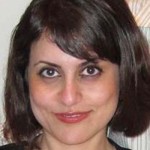
Hany Kashani, M.D.
Dr. Kashani worked on her Master’s degree with Dr. Siewerdsen at the University of Toronto. Her worked involved the clinical evaluation of a new dual-energy chest imaging system, where she showed the benefit to lung nodule detection. Dr. Kashani continued her PhD studies at the University of Toronto in research aimed at characterization of coronary plaque.
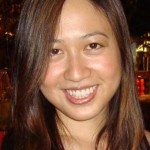
Wen Liu, Ph.D.
Dr. Liu earned her PhD in Computer Science at Johns Hopkins University, where her research focused on Augmented Reality & Intraoperative Image Guidance for Robotic Surgery. She worked with Dr. Siewerdsen and Dr. Taylor on the registration of endoscopic video and cone-beam CT in both skull base neurosurgery as well as transoral robotic surgery in otolaryngology. Dr. Liu is now a Research Scientist at Siemens Healthcare, Medical Imaging Technology.
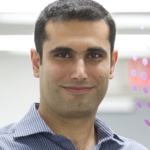
Amir Manbachi, Ph.D.
Dr. Manbachi was the “Director of Innovations” at the Carnegie Center as well as a research faculty in Biomedical Engineering, focusing on various imaging modalities for interventional spine applications. He obtained his PhD from the University of Toronto, under the supervision of Dr. Richard S.C. Cobbold. Prior to joining Johns Hopkins, he was a postdoctoral fellow at Harvard-MIT Division of Health Sciences and Technology (2015-16) and the founder and CEO of Spinesonics Medical (2012-2015), a spin-off from his doctoral studies. He currently is the Associate Director of Undergraduate Programs for the Center for Bioengineering Innovation and Design at Johns Hopkins University.
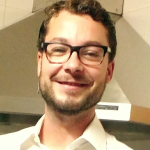
Eugenio Marinetto
Eugenio Marinetto was a visiting PhD candidate from the Unidad de Medicina y Cirugia Experimental, Hospital Gregorio Maranon, in Madrid Spain, where his thesis involves the development of novel systems for improved intraoperative radiation therapy. His work at the I-STAR Lab includes the development of new intraoperative ultrasound imaging techniques, integration of ultrasound with surgical navigation systems, and registration of ultrasound and CT or cone-beam CT images.
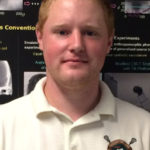
Alex Martin
Alex worked as Lab Coordinator at I-STAR, working on research and instrumentation related to cone-beam CT and image-guided surgery. He worked on image analysis in dual-energy CT imaging for rheumatology, and he developed a robotic end-effector for an image-guided surgical robot.
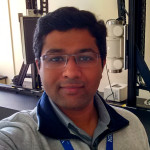
Aswin Mathews
Dr. Mathews worked with Dr. Stayman on novel 3D image reconstruction and fluence-field modulation methods for low-dose CT. His graduate studies in electrical engineering at Washington University in St Louis focused on novel PET systems and reconstruction methods.
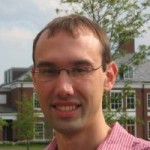
Daniel Mirota, Ph.D.
Dr. Mirota earned his PhD in Computer Science at Hopkins under the supervision of Greg Hager, where his work involved registration of endoscopic video with cone-beam CT for image-guided skull base surgery. He also worked as a postdoctoral fellow at Hopkins to see such work through to groundbreaking first clinical studies. Dr. Mirota is now a Research Engineer at Intel, San Francisco CA.
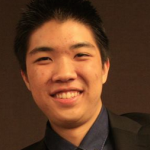
Michael Mow
Michael Mow was a MSE student in the Department of Biomedical Engineering at Johns Hopkins University and a research assistant in the I-STAR Lab. His research included the development of a digital perfusion phantom using 3D/4D image simulation and a physical perfusion phantom using high-end 3D printing. He began a clinical study involving a dedicated cone beam CT head scanner used for the detection of acute intracranial hemorrhage. Following Hopkins BME Master’s, he attended at the Johns Hopkins Carey Business School and is now teaching Physics courses as a lecturer at California Baptist University
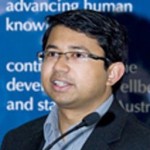
Abdullah Muhit, Ph.D.
Dr. Muhit worked as a Research Scientist at I-STAR on the development and application of a dedicated cone-beam imaging system. He performed some of the first clinical studies of weight-bearing knee cone-beam CT and quantitative imaging of bone health. Abdullah also worked as the Research Director of Curtis National Hand Center at MedStar Union Memorial Hospital in Baltimore, MD. He is now a Clinical/Biomedical Engineering professional in Perth, Australia.
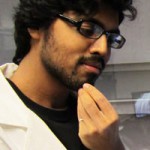
Sajendra Nithiananthan, Ph.D.
Dr. Nithiananthan (“Saj”) earned his PhD in Biomedical Engineering at Hopkins on the topic of deformable image registration. His work included novel variations on the Demons algorithm with primary application in image-guided surgery of head and neck cancer. Dr. Nithiananthan is currently a Data Analysis Engineer at Microsoft.
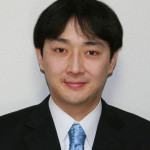
Yoshito Otake, Ph.D.
Dr. Otake (“Yoshi”) was a postdoctoral fellow at Hopkins BME and Computer Science and helped to develop several novel algorithms for 3D-2D image registration, including the LevelCheck algorithm for image-guided spine surgery. Dr. Otake is now an Associate Professor at the Nara Institute of Science and Technology (NAIST), where his research includes biomedical imaging and augmented reality.
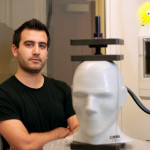
Amir Pourmorteza, Ph.D.
Dr. Pourmorteza was a biomedical engineer working on model-based 3D image reconstruction for CT and cone-beam CT. He received his Ph.D. in BME at Hopkins under the supervision of Dr. Elliot McVeigh on the topic of cardiac CT. At the I-STAR Lab, he worked with Dr. Web Stayman on the development of new prior-image-based 3D image reconstruction algorithms. Dr. Pourmorteza is now a scientist at the National Institutes of Health Clinical Center, Bethesda MD.
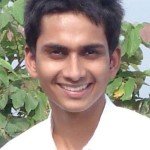
Prakhar Prakash
Prakhar earned his Master’s degree at Hopkins BME, where his work at the I-STAR Lab focused on image quality models and optimization of cone-beam CT for orthopaedics imaging. His work laid the groundwork for system design of a new scanner for weight-bearing CT, using task-based image quality as an objective for system optimization. Prakhar is now a Systems Engineer in CT Systems at GE Healthcare.
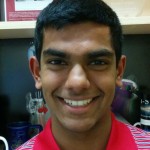
Joshua Punnoose
Joshua Punnoose was an undergraduate Biomedical Engineer at Johns Hopkins. In the I-STAR Lab, Josh is worked on implementation of an automatic instrument registration algorithm to improve registration accuracy and design tools with unambiguous images features under radiographic imaging. Josh was a Ph.D. student at the University of Minnesota studying biomedical engineering.
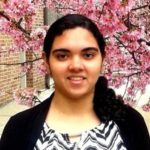
Radhika Rajaram
Radhi worked as Lab Coordinator at the I-STAR Lab and Carnegie Center for Surgical Innovation. She worked extensively with the 3D Printing Facility at the Carnegie Center, helping to develop numerous novel 3D-printed anatomical models for radiology and surgery. She also worked on topics of 3D image-guided surgery and helped manage the laboratory websites.
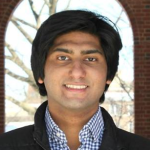
Vignesh Ramchandran
Vignesh Ramchandran is an undergraduate majoring in Biomedical Engineering working on adapting the UR5 robotic arm for use in high-precision, image-guided tool placement to assist pedicle screw placement procedures.
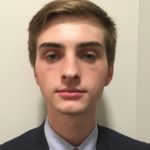
Benjamin Ramsay
Ben was an undergraduate in Hopkins BME collaborated on an atlas-based registration in which sub-atlases are used in a series of stages according to similarity in principal component analysis to guide more accurate deformable registration.
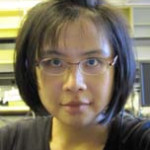
Sureerat Reaungamornrat, Ph.D.
Sureerat (Ja) Reaungamornrat earned her PhD in Computer Science at Johns Hopkins University, where her research involved the development of novel deformable image registration methods for image-guided interventions.
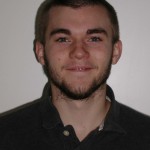
Thomas Reigel
Tommy worked as a Research Assistant and Laboratory Technician at the I-STAR Lab, where his work included x-ray image quality and development of the I-STAR high-speed computing network. Thomas is now Senior Developer at Analytical Informatics in Baltimore, working with clinicians on innovative healthcare software.
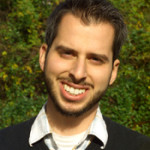
Sam Richard, Ph.D.
Dr. Richard was Dr. Siewerdsen’s first PhD student in Medical Biophysics at the University of Toronto. Sam’s research involved the first development of cascaded systems analysis and task-based detectability index for dual-energy imaging. His work guided the development of new dual-energy radiography systems for early-stage lung cancer detection. Sam continued in a postodoctoral fellowship and as Assistant Professor at Duke University, where he extended task-based analysis to computed tomography in collaboration with Dr. Ehsan Samei. He is now a Project Leader at the Carestream Health Research & Innovation Labs, where he oversees all pre-clinical evaluations of new medical imaging products […]
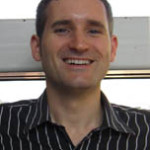
Sebastian Schafer, Ph.D.
Dr. Schafer was a Research Scientist at the I-STAR Lab in Hopkins BME, where his worked involved the physics of image quality and dose in C-arm cone-beam CT as well as clinical application in skull base neurosurgery. Sebastian is now Managing Clinical Coordinator at Siemens Healthcare.

William Shyr
William Shyr was an undergraduate in the Department of Biomedical Engineering. He worked on the analysis of 3D joint space from high-resolution 3D images and its correlation with biomechanical profile and pathology.
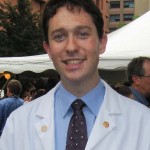
Jordan Silverman
Jordan worked with Dr. Siewerdsen at the University of Toronto, where his Master’s research involved the low-dose limits of lung nodule detectability in chest CT. Jordan developed a lung nodule phantom and implemented ultra-low-dose scan protocols on the Toshiba Aquilion CT scanner. Following his Master’s degree, he entered Med School at Tufts (Boston MA) and continued his MD studies at the University of Toronto.
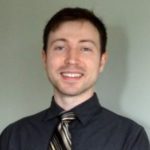
Daniel Tward
Daniel began work with Dr. Siewerdsen as a Research Assistant at the University of Toronto, where his work included modeling of 3D imaging performance (noise-power and NEQ) for cone-beam CT. Daniel’s work was groundbreaking in establishing physical models for noise-power and NEQ that is now at the heart of many projects in task-based performance evaluation and optimization in 3D imaging. Daniel is now a PhD Candidate at the Institute for Computational Medicine, Johns Hopkins University, working with Dr. Mike Miller on modeling and computational anatomy.
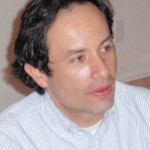
Carlos Varon
Carlos Varon worked with Dr. Siewerdsen at the University of Toronto, where his work involved the development of dual-energy imaging for improved diagnostic performance in early-stage lung cancer detection. Carlos is now a medical physics linear accelerator and cyclotron engineer at the University Health Network, Toronto ON.
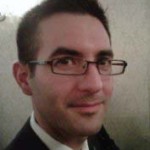
Aaron Waese
Aaron was Dr. Siewerdsen’s first undergraduate research assistant at the University of Toronto and is the original author of the SPEKTR algorithm for x-ray spectral calculation. (spektr) After earning his Bachelor’s degree in Medical Biophysics, he earned a Masters in Business Administration at York University.
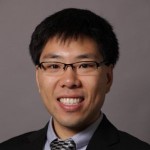
Adam Wang, Ph.D.
Adam worked as a Research Scientist at the I-STAR Lab and pioneered several areas of model-based 3D image reconstruction methods to improve cone-beam CT image quality and reduce radiation dose in in image-guided surgery. Adam is now a Research Scientist at Varian Medical Systems.
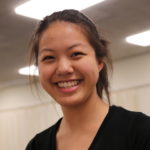
Felicia Wang
Felicia was a summer student at the I-STAR Lab and Carnegie Center for Surgical Innovation, where she worked on two main projects: (1) a large statistical atlas of spine anatomy; and (2) a novel deformable spine phantom produced using a 3D printer. The spine atlas helped form the basis of the “SpineCloud” image analytic platform at I-STAR.
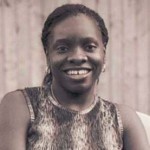
Dinsie Williams
Dinsie worked with Jeff Siewerdsen at the University of Toronto on the development of a new dual-energy chest imaging system for improved detection of early-stage lung cancer. She completed her graduate studies at Dartmouth and also worked at General Electric Medical Systems. She is now a Senior Hospital Consultant at Hayes, Inc.
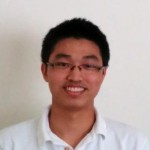
Kyle Xiong
Kyle worked as the laboratory technician, running the I-STAR x-ray bench and assisting in dual-energy imaging of rheumatoid arthritis.Kyle completed an internship at Takeda pharmaceuticals and is pursuing his PhD at Carnegie Mellon’s School of Computer Science in computational biology.
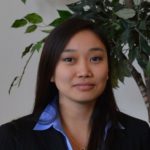
Jennifer Xu, Ph.D.
Jennifer Xu earned her Ph.D. in Biomedical Engineering from Johns Hopkins University. Her research involved the development, characterization, and modeling of photon counting detectors and new methods for photon counting spectral (dual-energy) CT. She also worked on the modeling, design, and development of a new cone-beam CT scanning system for imaging of traumatic brain injury at intracranial hemorrhage at Johns Hopkins Hospital.
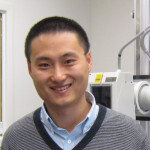
Shiyu Xu, Ph.D.
Dr. Xu worked as a postdoctoral fellow with Dr. Web Stayman in Biomedical Engineering Hopkins, where his research included advanced 3D image reconstruction algorithms, including Known-Component Reconstruction (KC-Recon). His work includes novel MBIR methods for noise reduction in low-dose CT and spectral CT. Dr. Xu is now a Research Scientist at Philips Healthcare, Cleveland OH.
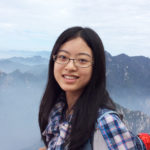
Ran Yan
Ran was a summer student from Shanghai Jiao Tong University in China. During her work at the I-STAR Lab, she developed a 3D-printed phantom for evaluation of CT spatial resolution throughout the axial plane (whereas traditional phantoms evaluate resolution at a single location).
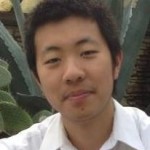
Thomas Yi
Thomas Yi was an undergraduate in Hopkins Biomedical Engineering and Computer Science. His project focused on adapting the UR5 robotic arm for use in high-precision, image-guided tool placement with the end goal of improving pedicle screw placement procedures. He is currently working on his MD at Brown University.
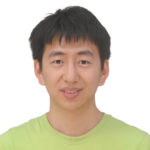
Hao Zhang, PhD
Dr. Zhang was a postdoctoral research fellow in the Department of Biomedical Engineering at Johns Hopkins University. He was working on reconstruction of difference (RoD) in sequential CT studies. His research interests included imaging physics, algorithm development, system design, as well as various clinical applications. He received his Ph.D. in Biomedical Engineering (Medical Physics track) from SUNY-Stony Brook University, and his dissertation research focused on regularization design for statistical image reconstruction of low-dose X-ray CT. He is currently a medical physics resident at Stanford. Hao bout that?
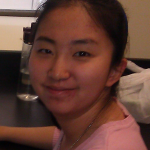
Zhe Zhao
Zhe worked at the I-STAR Lab as part of her PhD rotation from Tianjin University. Her worked involved the modeling and measurement of view aliasing effects in cone-beam CT. Her worked helped uncover fundamental understanding of the effects of quantum noise and view aliasing effects in cone-beam CT – helping to answer the “minimum number of views” question in CT acquisition. She continued her PhD studies in imaging research at Tianjin University.
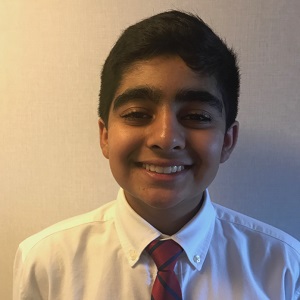
Gabriel Shafiq
Gabe was a high-school intern working at I-STAR and the Carnegie Center for Surgical Guidance on topics of ultrasound guidance. He developed a 3D-printed needle guide that worked in concert with an ultrasound probe tracked in real-time with a surgical tracking system.
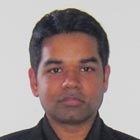
Gaurav Thawait, M.D.
Dr. Thawait collaborated with the I-STAR Lab as a Research Fellow in the Department of Radiology at Johns Hopkins University. He worked on numerous studies involving novel weight-bearing cone-beam CT systems for MSK radiology, including analysis of joint morphology in osteo-arthritis.

Andrew Davis
Andrew Davis worked on image-guided, robotic-assited surgery in the I-STAR laboratory of Dr. Jeff Siewerdsen. He are utilizing non-circular CBCT imaging trajectories with optimization-based tomographic reconstruction algorithms for robotically assisted surgery. By designing a task-based metric of utility for the patient’s treatment procedure, both parameters of the trajectory and the reconstruction program can be selected to provided a clinicaly useful image of the patient.
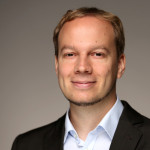
Michael Brehler, Ph.D.
Dr. Brehler worked as a postdoctoral research fellow in the Department of Biomedical Engineering at Johns Hopkins University. His core research interests include active shape models, anatomical landmark identification and atlas-based registration. He is currently working on the development of semi-automatic tools for anatomical landmark annotation and algorithms for automatic landmark identification. He also worked on quantitative assessment of trabecular microarchitecture and automatic joint morphology measurements in volumetric musculoskeletal imaging. His background includes machine learning (classification), intraoperative assessment and visualization of fractures in cone-beam CT data, high resolution microscopy segmentation and cell tracking. He worked at the German Cancer Research Center and obtained his […]
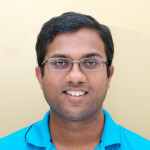
Tharindu De Silva, Ph.D.
Tharindu De Silva worked as a postdoctoral research fellow in the Department of Biomedical Engineering at Johns Hopkins University. He worked on the development of image registration techniques for applications in spine surgery and other image-guided interventions. His research interests included rapid 3D-2D image-based registration, deformable registration algorithms and validation of these techniques to make clinical translation feasible. He has a background in fast image registration methods for motion compensation during ultrasound-guided interventions.
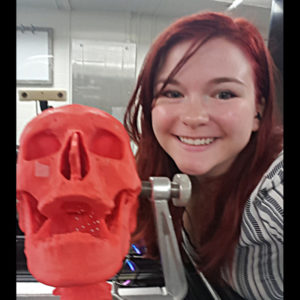
Alisa Brown
Alisa Brown graduated from Johns Hopkins with a bachelor’s in biomedical engineering and currently continuing her studies as a master’s student.
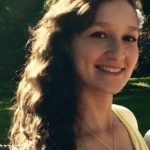
Nicole Chernavsky
Nicole Chernavsky worked as a PhD student in Biomedical Engineering at Johns Hopkins. She was a part of a collaborative project between the Carnegie Center for Surgical Innovation and the Department of Radiation Oncology – integrating a small-profile diagnostic-quality CT scanner into image-guided radiation therapy. Specific goals include improving the accuracy of deformable image registration and laying the foundation for adaptive radiation therapy. Her previous research experience includes investigating stem cell replacement therapy for treatment of Parkinson’s disease and designing a biosynthetic pathway for the production of indigo. Outside the lab, Nicole enjoys backpacking and performing with her piano trio Chordae Tendineae.
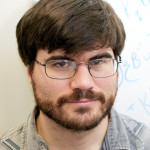
Steven Tilley II
Steve Tilley worked as a PhD student Biomedical Engineering at Hopkins working on the development of novel 3D imaging systems.His research included development of photon counting detectors for high-quality spectral CT and the development of novel 3D image reconstruction methods, including the Known-Component Reconstruction (KCR) method for model-based reconstruction. His previous experience in Biological Engineering at Cornel Unviersity includes work in 2-photon fluorescence microscopy and hyperspectral imaging using a 16-channel fluoroescence detector system.
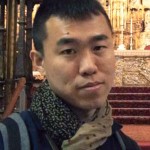
Jongheun Yoo
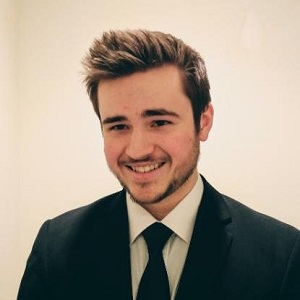
Alex Smith
Alexander Smith was a Research Technician and Teaching Assistant for the Carnegie Center for Surgical Innovation at Johns Hopkins. He worked with Jeffery H. Siewerdsen, PhD on designing a course, Surgery for Engineers, which will take place during Fall of 2019, and will assist with research projects and laboratory infrastructure throughout the year. Before joining I-STAR, his research at Saint Louis University included surgical robotics, high-resolution CT to robot subspace registration, and fast image-guided EVD placement, aiming for reduced operating time while maintaining surgical precision in minimally invasive discectomy, pedicle screw placement, and laminectom
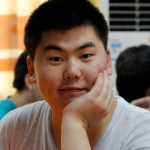
Qian Cao
Qian Cao was a PhD student in Biomedical Engineering at Hopkins who worked with Dr. Wojciech Zbijewski, PhD. His research included working on methods to characterize joint space morphology in CBCT images, which could help improve early diagnosis and monitoring of arthritis as well as assess the impact of trauma in the joints. Before joining I-STAR, his previous research experience includes optical imaging and development of novel contrast agents in the extended near-infrared (exNIR) range.

Sophia Doerr
Sophia Doerr was a graduate student working with Jeffrey H. Siewerdsen, PhD in the Biomedical Engineering (BME) MSE program. She graduated from Johns Hopkins in December 2017 majoring in BME and Applied Mathematics & Statistics. She researched automatic computation of global spinal alignment metrics via anatomical features in CT images. Previously, she worked on the application of Deep Learning to spinal navigation surgery, leading to a developing interest in the field of medical imaging.
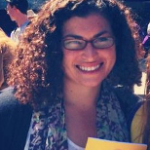
Sarah Capostagno
Sarah Capostagno was a PhD student in Biomedical Engineering at Hopkins working with Jeffrey H. Siewerdsen, PhD on the development of task-based imaging using interventional C-arm systems. Her research included development of a novel calibration technique using 3D to 2D image registration to extract the intrinsic and extrinsic parameters of the system with the purpose of allowing for atypical C-arm orbits and reducing artifact in the reconstructed images. Her previous research includes the development of realistic cardiac models from high resolution late gadolinium enhancement MR images, diffusion tensor MR images, and ECG data to aid surgeons in targeting locations for myocardial ablation for the treatment of tachycardia.
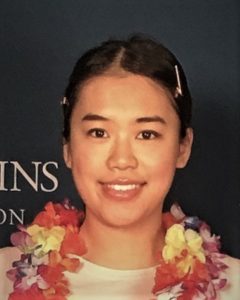
Amalie Shi
Amalie Shi was a Master’s student in Biomedical Engineering at Johns Hopkins working with Dr. J. Webster Stayman, PhD. She worked on the development of new phantoms for CT image quality assessment.
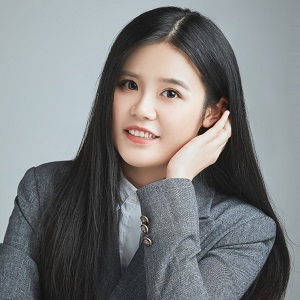
Doris Wang
Doris Wang was a first-year MSE student at the Department of Biomedical Engineering with a focus area in imaging and biomedical instrumentation. She worked with Dr. Siewerdsen on metal artifact avoidance in mobile C-arm cone-beam CT using deep learning. Her previous research experience includes microfluidics device design and modulation, as well as spectral imaging analysis.
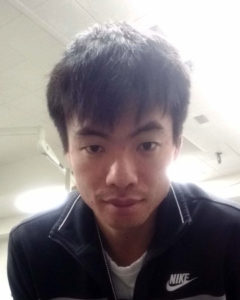
Andrew Leong, Ph.D.
was a Postdoctoral Fellow in Biomedical Engineering at Johns Hopkins University. He was working on advanced methods for low-scatter imaging and sparse CT data collection.
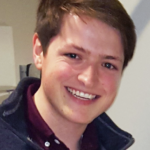
Michael Ketcha
Michael Ketcha was a postdoctoral research fellow in Biomedical Engineering at Johns Hopkins who worked with Jeffrey H. Siewerdsen, PhD on 3D-2D image registration in application
to image-guided spine procedures with a specific goal in mind of automatically labeling
vertbral target within a digital radiograph. In this project he developeded a
method to overcome detrimental effects of anatomical deformation through a multi-stage
registration framework. His past research includes shape analysis of cortical structures
extracted from brain MR data, graph analysis of neural connectomes, and ultrasound pose recovery in image-guided procedures mapping.
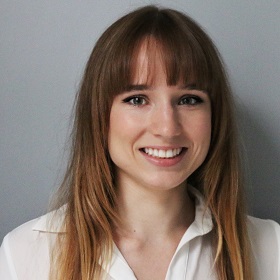
Irina Bataeva
Irina Bataeva was a MSE student in the Department of Mechanical Engineering at Johns Hopkins
University. She worked with Jeffery H. Siewerdsen, PhD on detection and guidance of surgical instruments during pelvic trauma surgery. Her previous experience
at University of California, San Diego includes research in computational biomechanics
and design of variable-stiffness ankle-foot
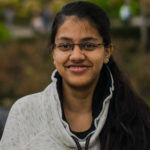
Shalini Subramanian
Shalini Subramanian worked as Masters student in the Department of Biomedical Engineering at Johns Hopkins University. Her research involved CBCT performance in spatial resolution and quantitative
imaging of trabecular microarchitecture in comparison to conventional MDCT. Shalini is currently working as an Image Analysis Specialist at Radiopharmaceutical Imaging and Dosimetry, LLC.